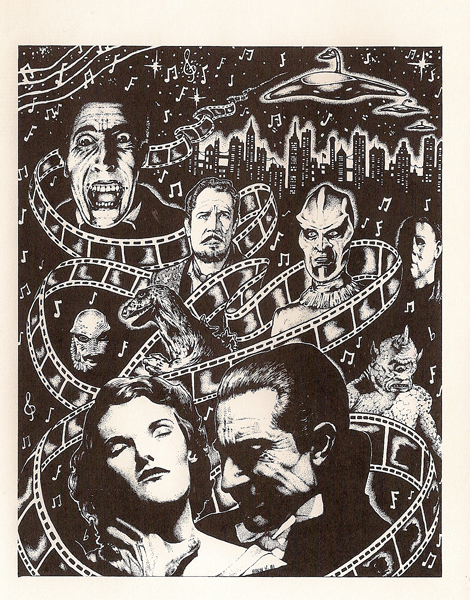October 1, 2018
Cipriani a Master of All Genres and Profoundly Moving Music
By Randall D. Larson
 Beloved Italian composer Stelvio Cipriani has died this morning in Rome at the age of 81. The Italian website Il Messaggero reported that Cipriani passed away after suffering from ischemia since last December. Cipriani was a gifted melodist whose work traversed European cinema since 1966. He was fluent in virtually all genres of film and was known for sublime melodies, exotic mixtures of orchestra and guitars, voices, and inventive instrumental combinations.
Beloved Italian composer Stelvio Cipriani has died this morning in Rome at the age of 81. The Italian website Il Messaggero reported that Cipriani passed away after suffering from ischemia since last December. Cipriani was a gifted melodist whose work traversed European cinema since 1966. He was fluent in virtually all genres of film and was known for sublime melodies, exotic mixtures of orchestra and guitars, voices, and inventive instrumental combinations.
With a strong background in jazz music, Cipriani started his film career in the Italian Western period with the 1966 film, THE BOUNTY KILLER (aka THE UGLY ONES). And within the next three years also scored such Westerns as THE STRANGER RETURNS, THE SILENT STRANGER (Lo Straniero di Silenzio), LAW OF VIOLENCE (La Legge della Violenza), and the pair of westerns associated with a gunfighter named “Hallelujah,” quickly adapting to the Morricone-style of “Spaghetti Western” music.
Among his most famous film scores are THE ANONYMOUS VENETIAN (1970) not only awarded him the “Nastro d’Argento” for Best Score, but brought him to the international limelight; the music is still considered to be among the most famous Italian film soundtracks. He is also well known for scoring Ruggero Deodato’s CONCORDE AFFAIR ’79. But the large part of his scoring was for low-budget genre movies known for violence and suspense, films that he didn’t seem to mind specializing in, and which offered him profound opportunities for his own style of musical expression.
By the 1970s he became fluent throughout the giallo era, which prompted some of his best scores, mixing beautiful melodies and vocalise with raucous and darkly textured music of tension and violence. Cipriani composed the music for three films for Mario Bava, BAY OF BLOOD (1971; Ecologia Del Delitto, although it was released in the US with the beautifully macabre title of TWITCH OF THE DEATH NERVE; the film is noted by many for essentially inventing the slasher movie), the Italian version of BARON BLOOD (1972; Gli Orrori Del Castello Di Norimberga; re-scored for AIP’s American release by Les Baxter), and the heist thriller, (RABID DOGS 1974; Cani Arrabbiati), all mixing very tuneful primary themes with very dissonant suspense material. For Riccardo Freda, he scored THE IGUANA WITH THE TONGUE OF FIRE (1971) which featured a striking melisma by singer/composer Nora Orlandi, who also sang in Luciano Ercoli’s DEATH WALKS ON HIGH HEELS (1971) and in Osvaldo Civirani’s THE DEVIL HAS SEVEN FACES (1971). Each of these scores demonstrated Cipriani’s aptitude for mixing wordless female voice melodies over orchestra in contrast with very dissonant, often electronic suspense material. Cipriani’s breezy fashion was a good fit for FRANKENSTEIN: ITALIAN STYLE (1975), a bizarre fantasy comedy which takes the under-the-covers ending gag from Mel Brook’s YOUNG FRANKENSTEIN and makes a whole film about it. His music for Freda’s THE NIGHT CHILD (1975), about a documentary filmmaker’s obsession with the young subject of a strange painting, favors romantic melodies in lieu of menacing motifs, which are here kept to a minimum. Like most giallo films, playing against the graphic violence and gore of the storyline by providing lyrical and beautiful music gave the genre its most distinctive and striking component, one in which Cipriani was especially adept.
Beyond the giallo stylisms, Cipriani also had a flair for scoring straightforward monster movies, from the cephalopodan terrors of TENTACLES (1977) to the hungry maw of reptilian death in Sergio Martino’s ALLIGATOR (1981). The garish, infected zombies of Umberto Lenzi’s CITY OF THE WALKING DEAD (1980; aka NIGHTMARE CITY), prompted a Goblin-esque approach not unlike that of DAWN OF THE DEAD; the score is strong, strident, and relentless – just like the awakened dead in the film. In PIRANHA II: THE SPAWNING (1981), a slap-dash sequel to Joe Dante’s hit 1978 movie directed by James Cameron in his feature film debut, Cipriani contrasts the slow, drifting cadence of beautiful melodies against the fast-paced violin riffing that churns below it, musically reflecting the drifting swimmer floating at the surface, unaware of the school of toothy fish scurrying toward her.
During the same decade and the one that followed, Cipriani became equally prevalent in the genre of the poliziotteschi (police thriller); one of his best known early scores is 1973’s LA POLIZIA STA A GUARDARE (aka THE GREAT KIDNAPPING) for director Roberto Infascelli, and later he laid down propulsive, bold, and brassy scores for films like LA POLIZIA HA LE MANI LEGATE (1975; The Police Have Their Hands Tied), MARK OF THE COP (1975; Mark il Poliziotto, aka BLOOD, SWEAT, AND FEAR), UN POLIZIOTTO SCOMODO (1978; An Uncomfortable Policeman), and others.
Cipriani also enjoyed scoring the occasional exploitation or sexploitation movie; one of his earliest films had been LUANA, THE GIRL TARZAN in 1968 (a film noted for licensing a Frank Frazetta painting as its poster image and looking nothing like it), and in the ‘80s he endowed many a soft-core thriller with delightfully wrought pop and lounge melodies, such as Joe D’Amato’s PAPAYA: LOVE GODDESS OF THE CANNIBALS (1978), ORGASMO NERO (1980, aka VOODOO BABY), and PARADISO BLU (1981).
A genre by any other name – would equally benefit from the talents of Stelvio Cipriani, and often did. His gifts for beautiful melodies and straight ahead rhythms benefitted a filmography of some 240 credits. Almost as prolific as his countryman Ennio Morricone, with whom his musical gifts can be fairly compared, Cipriani was an exquisite and capable artist giving the right kind of music – and most often very beautiful music – to European films of all types.
He will be very much missed.




